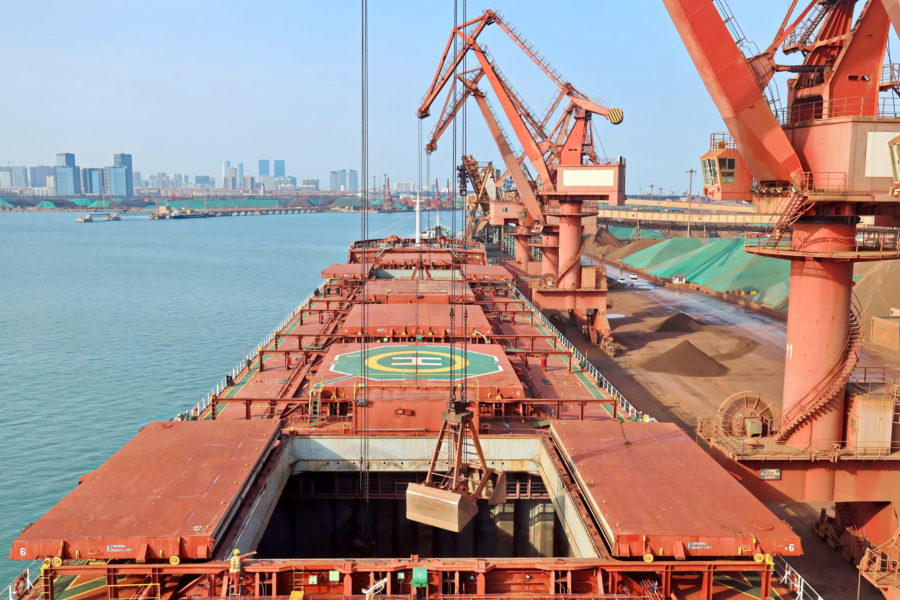China plans tariffs on $60B of US goods in latest trade salvo

* China fires latest salvo in trade war with U.S.
* Goods targeted include LNG, semiconductors, beef, aircraft
* Washington threatened 25 pct tariffs on $200 bln in China goods
* Senior Chinese diplomat casts doubt on further trade talks
By Se Young Lee and Christian Shepherd
BEIJING/SINGAPORE, Aug 3 (Reuters) – China proposed retaliatory tariffs on $60 billion worth of U.S. goods ranging from liquefied natural gas (LNG) to some aircraft on Friday, as a senior Chinese diplomat cast doubt on prospects of talks with Washington to solve their bitter trade conflict.
The Trump administration tightened pressure for trade concessions from Beijing this week by proposing a higher 25 percent tariff on $200 billion worth of Chinese imports. China vowed to retaliate while also urging Washington to act rationally and return to talks to resolve the dispute.
The United States and China implemented tariffs on $34 billion worth of each others’ goods in July. Washington is expected to soon implement tariffs on an additional $16 billion of Chinese goods, which China has already announced it will match immediately.
Morgan Stanley has estimated annual Chinese imports of U.S. LNG could rise to as much as $9 billion within two or three years, from $1 billion in 2017
China has now either imposed or proposed tariffs on $110 billion of U.S. goods, representing the vast majority of China’s annual imports of American products. Last year, China imported about $130 billion of U.S. goods.
China’s finance ministry unveiled new sets of additional tariffs on 5,207 goods imported from the United States, with the extra levies ranging from 5 to 25 percent.
Timing will depend on the actions of the United States, the Chinese Commerce Ministry said in a separate statement.
“The U.S. side has repeatedly escalated the situation against the interests of both enterprises and consumers,” it said. “China has to take necessary countermeasures to defend its dignity and the interests of its people, free trade and the multilateral system.”
A top adviser to U.S. President Donald Trump said the newly proposed tariffs were not as severe as the White House had been bracing for, and he warned China not to test Trump’s resolve.
“They better not underestimate the president,” White House National Economic Council Director Larry Kudlow said in an interview on Fox Business Network. “He is going to stand tough.”
Tensions weigh on Chinese markets
The United States alleges that China steals U.S. corporate secrets and wants it to stop doing so, and is also seeking to get Beijing to abandon plans to boost its high-tech industries at America’s expense. Washington also wants China to stop subsidising Chinese companies with cheap loans, claiming that this allows them to compete unfairly.
Trump has said he is determined to reduce the large U.S. trade deficit with China.
The U.S. president has accused China and others of exploiting the United States in global trade, and has demanded Beijing make a host of concessions to avoid the new duties on $200 billion of Chinese goods, which could be imposed in the weeks after a comment period closes on Sept. 5.
Beijing says the United States is deliberately creating the trade conflict, using bullying tactics, and ignoring international negotiating norms so that it can stop the rise of China as a competitor on the world stage.
The rising tensions have weighed on Chinese stock and currency markets, with the Chinese yuan falling against the dollar.
“Instead of retaliating, China should address the long-standing concerns about its unfair trading practices,” White House spokeswoman Sarah Sanders said in an emailed statement.
Top diplomats meet
The two countries have not had formal trade talks since early June.
Still, two senior diplomats met earlier on Friday on the sidelines of a regional summit in Singapore.
China is willing to resolve differences with the United States “on the basis of an equal footing and mutual respect,” China’s top diplomat said after meeting U.S. Secretary of State Mike Pompeo.
“He (Pompeo) was accommodating on this as a direction, and said that he does not want current frictions to continue,” said State Councillor Wang Yi, who is also China’s foreign minister.
Answering a reporter’s question about what was specifically said on trade, Wang said: “We did not speak in such details.”
“How can talks take place under this pressure?,” he added.
However, speaking to reporters at the White House, Kudlow said there had been some communication on trade “at the highest level” in recent days.
Condoms and coffee
Among U.S. products targeted in the latest Chinese salvo were a wide range of agricultural and energy products, including liquefied natural gas. LNG’s inclusion marks a deployment by Beijing of one of its last major weapons from its energy and commodities arsenal in its fight with Washington.
The market is not large by value compared with approximately $12 billion of U.S. crude that came to China last year, but LNG imports could shoot up as Beijing forges ahead with its plan to switch millions of households to the fuel away from coal.
Morgan Stanley has estimated annual Chinese imports of U.S. LNG could rise to as much as $9 billion within two or three years, from $1 billion in 2017. The amount could be even larger if the United States resolves a logistics bottleneck.
“As the total value of goods under tariffs shoots up, China has little choice but to use LNG and others to top up the value,” said Lin Boqiang, professor on energy studies at China’s Xiamen University.
“The U.S. gas industry will be much harder hit by this as China imports only a small volume whereas U.S. suppliers see China as a major future market.”
Other U.S. goods targeted by China in the latest list include semiconductors, some helicopters, small-to-mid-sized aircraft, condoms, iron ore, steel products, roasted coffee, sugar, foods containing chocolate, candies, and even car windscreens.
The United States was the fourth-largest supplier of foreign chocolate products to China in 2017, worth around $24 million, after Italy, Russia and Belgium, according to customs data. China’s growing sweet tooth is seen as a big sales opportunity for international makers of cookies and chocolate bars like Mars and Hershey.
Small- and medium-sized planes were on the list of goods that would be slapped with an additional 5 percent tariff. Helicopters with an empty weight of less than 2 tonnes were also on that list.
China’s biggest U.S. imports by value in 2017 were aircraft and related equipment, soybeans and autos.
(Additional reporting by Beijing and Shanghai Newsrooms and Susan Heavey in Washington; writing by Ben Blanchard; Editing by Nick Macfie, Martin Howell and Susan Thomas)
More News
Alphamin cuts 2025 tin guidance amid Congo conflict disruptions
Operations resumed this week at the Bisie mine, which accounts for about 6% of global tin supply.
April 17, 2025 | 07:50 am
{{ commodity.name }}
{{ post.title }}
{{ post.date }}




Comments